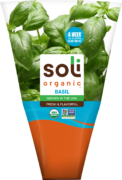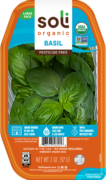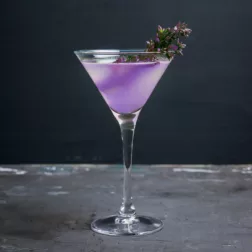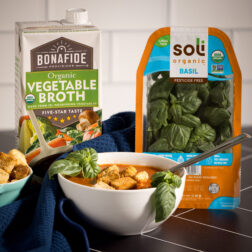
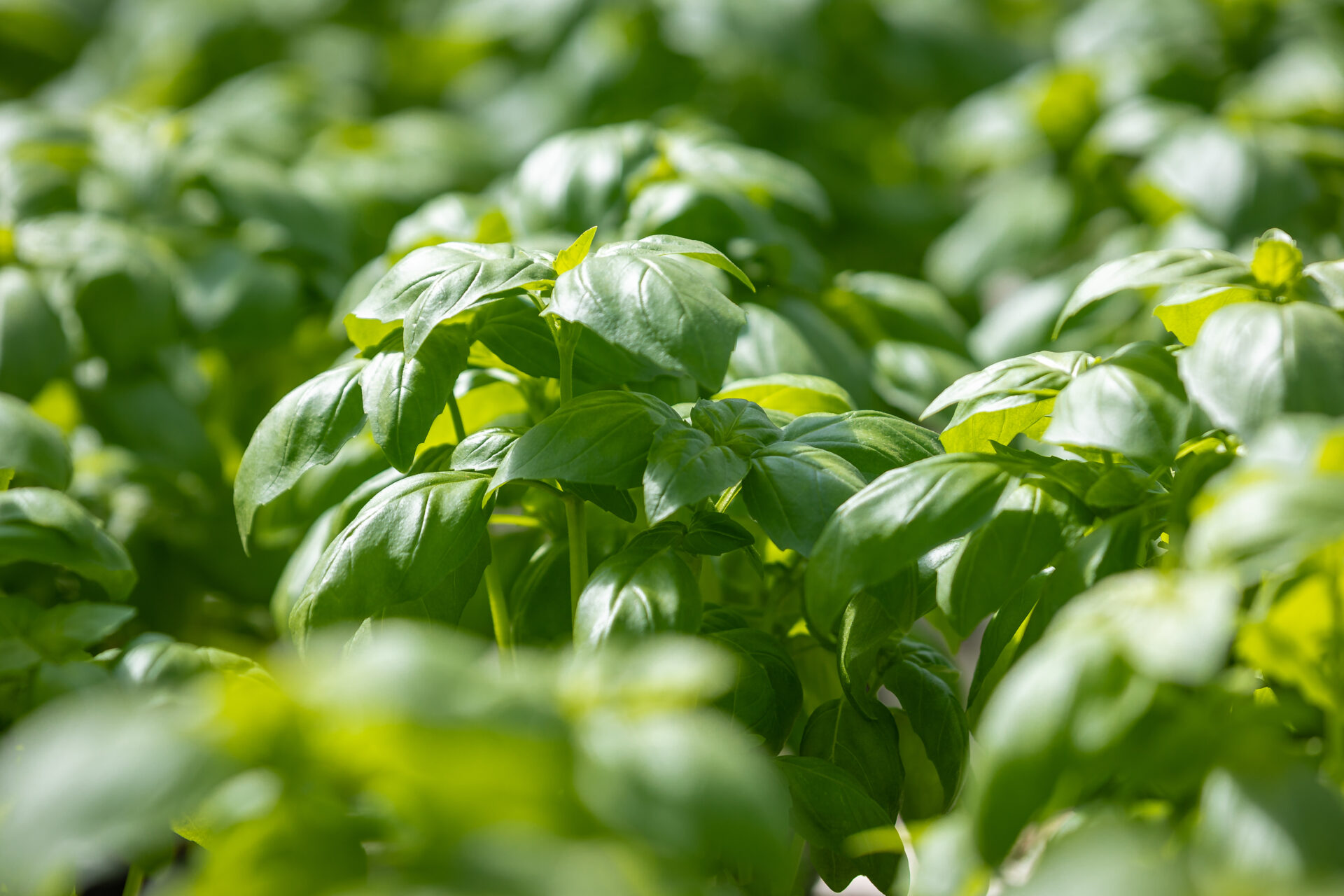
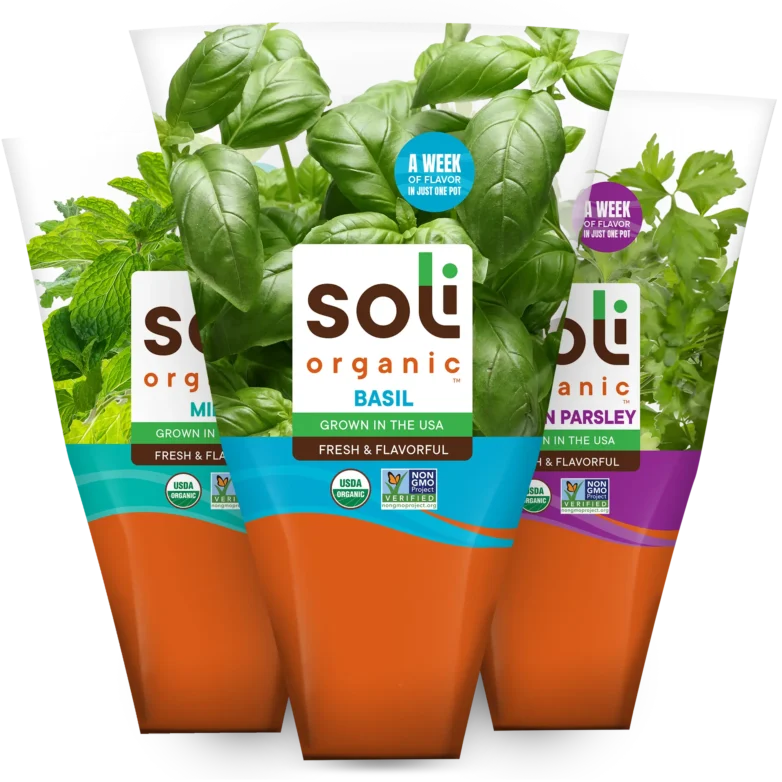
Bold, fresh, organic herbs straight from the living plant. Soli Organic Living herb plants are grown in organic soil for the best flavor. Keep them watered on your kitchen counter, clip as needed, and liven up any meal.
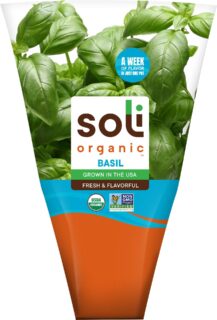
Basil
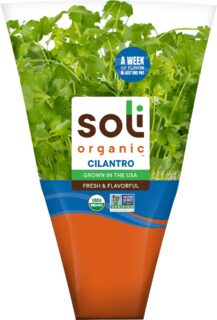
Cilantro
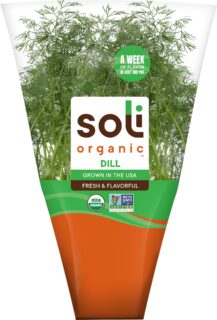
Dill
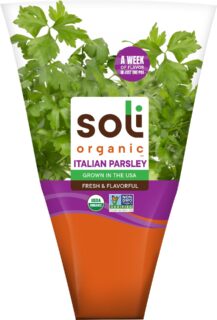
Italian Parsley
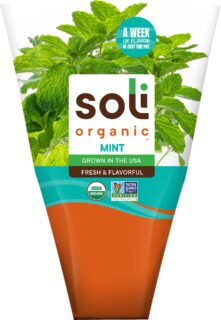
Mint
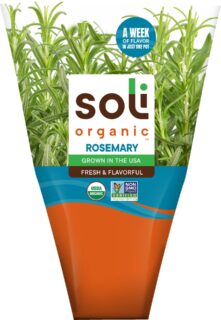
Rosemary
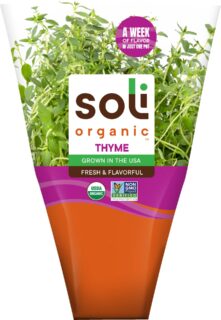
Thyme
Extra Large Living Herbs
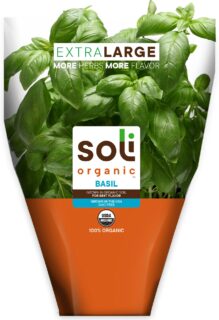
Basil
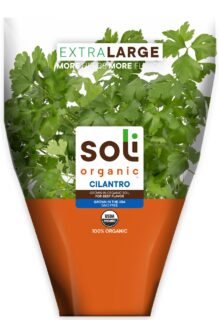
Cilantro
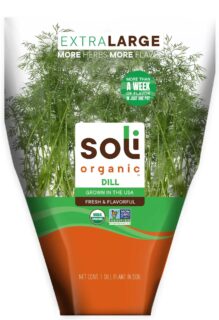
Dill
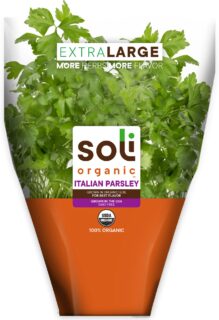
Italian Parsley
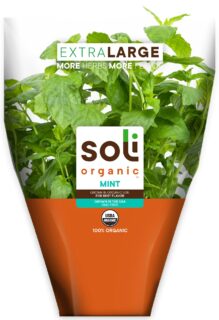
Mint

Rosemary
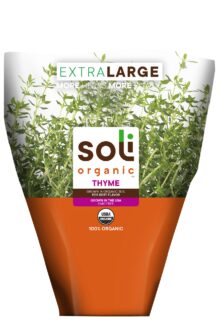
Thyme
How to Care for your Soli Organic Living Herb Plant
Keeping organic herbs healthy indoors or outdoors can be a rewarding experience! Here are some care tips to help your herbs thrive.
1. Bringing Home Your Living Herb
- Once you bring your plant home, it is important to give it some time to recover from its journey from the store to your home. If you’re planning to repot it, this helps to avoid transplant shock.
- Remove the outer sleeve and place it in a shallow dish with some water.
- The plant may droop after removing the sleeve, which is normal. Regular water and sunlight will help the plant to recover.
2. Choose the Right Pot and Soil
- Container or Directly Planted: Herbs can thrive in container pots or be planted directly into the ground.
- Drainage: Use pots with drainage holes to prevent water from sitting at the roots, which can lead to rot. If you plan on planting directly into the ground, make sure that the area drains easily and doesn’t stay soggy after rain.
- Soil: Choose an organic potting mix formulated for herbs or vegetables. Herbs generally prefer light, well-draining soil.
3. Provide Adequate Sunlight
- Most herbs need at least 6-8 hours of sunlight daily. If planting outdoors, make sure to plant them where they will receive direct sunlight. If you are growing in a particularly hot climate, the tender herbs will appreciate some shade.
- If growing indoors, place them near a sunny window or use a grow light if sunlight is limited. Rotate pots regularly to ensure all sides of the plant get light and grow evenly.
4. Water Wisely
- Herbs typically prefer soil that’s kept slightly moist, but not soggy. Water when the top inch of soil feels dry.
- Be cautious with overwatering, especially if the environment is humid or if pots have poor drainage. This can lead to “root rot” (Botrytis).
- If growing in a container, the easiest way to check moisture levels is to pick it up. If it feels light, add some water until it starts to run out the bottom. If it feels heavy, wait a day or two before checking again.
- When the weather is hot and dry, the herbs will need some supplemental watering. Be sure to monitor your plants and water before they begin to wilt.
5. Temperature and Seasonal Care
- Herbs typically enjoy moderate temperatures. Indoors, keep them away from cold drafts and heaters. Even a little bit of cold can cause basil to turn black and kill the plant.
- If you live in a temperate climate, you might need to bring more sensitive herbs (like basil) indoors during the winter. Wait until low temperatures are at least 50° F before planting basil outdoors.
- Even if you don’t plan on replanting, you can expect your plant to last in its original pot with a little care for 2-3 weeks or more!
6. More Tips
- Pruning: Regular trimming encourages herbs to grow bushier and prevents them from becoming tall and spindly. Remove dying or damaged leaves so the herbs dedicate growing energy to healthier leaves. Always prune just above a pair of leaves to stimulate new growth.
- Repotting: Some herbs, like basil and mint, grow quickly and may become root bound. Repot them into a larger container if the roots are growing through the drainage holes or the plant looks cramped.
- Pests: If you start to notice damage to your plant caused by insects, we recommend using an insecticidal soap. It is safe to use on edible plants and doesn’t harm animals.
7. Enjoy Fresh Herbs in a Home-Cooked Meal
- Don’t forget, these plants are meant to be eaten! Your household now has access to the freshest flavors possible.
- Explore new culinary possibilities or just keep it simple: using fresh herbs can involve trying out a new recipe or as simple as just adding a few leaves to a sandwich or salads.
- Don’t be afraid to use up an entire plant. This is why we sell living herbs in produce- to give consumers access to fresh flavor year-round!
With these tips, you can enjoy fresh, vibrant herbs for cooking, teas, or other uses year-round!
Why is my plant not thriving?
If your plant isn’t thriving, here are the most common issues:
- Not enough sun: herbs like a lot of sun, so be sure you’ve placed your plant in a sunny spot in your home.
- Not enough water: make sure your plant isn’t drying out. We recommend watering your plant whenever the soil feels dry, usually every 2-3 days.
- Too much water: be sure not to overwater your plant. It only needs a little water in the dish whenever the soil feels dry. Never leave your plant sitting in standing water for more than an hour.
- Too cold: living herb plants do not like the cold, especially basil! Don’t leave your plants sitting in a cold car and never refrigerate them.
A note to those using our herbs to feed butterflies/caterpillars:
All of our living plants are grown 100% organically and are free of artificial pesticides. However, we do use a limited number of USDA-approved, organic methods to control pests. This includes applying beneficial microbes and natural extracts that are completely safe for human consumption, but not always safe for caterpillars.
If a plant is purchased for caterpillar feeding, the leaves should be thoroughly rinsed, soaked, and rinsed again before feeding. After rinsing, try feeding to a small number of caterpillars first before feeding it to the whole group.
If transplanting outdoors, rinse thoroughly with a garden sprayer after planting, and/or plant just before a big rain.
